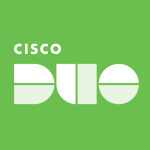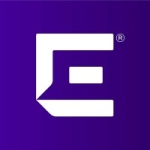What is our primary use case?
We have two servers and they're both VMs. Every network system is issued a certificate and each device coming onto the network has to be on the domain with an active AD user logging into it. It needs an up-to-date AMP, which is our Cisco malware and virus scan product and it also needs to have the most current Microsoft security updates and the three layers that we're using: The core VPN, the Network Access Manager and the ISE profiler. When it goes through all those different things on every port on the switch, there are commands for it to be able to go through an ACL so it knows what users are there, what server, and what devices have been put onto the domain. It can verify all that.
The user can then proceed on to the network. We've set it so that regular users are VLAN'd off and can only see the data network through ISE and are blocked from seeing the rest of the network. Depending on the department needs or other factors, we have cameras for security which are on a different VLAN, and they can see those. We also have something for O&M where the AC guy can see the AC equipment, and we can prevent all the VLAN's from being viewed by everybody.
We are customers of Cisco and I'm the infrastructure and Cyber security manager.
What is most valuable?
The solution cuts down on the repercussions of getting malware or ransomware which happened to us four years ago. We regularly took very aggressive snapshots and we were able to recover in an hour and 20 minutes without any loss of data.
What needs improvement?
Because we have a large database and 4,000 network devices, the solution can lag a bit when you're running updates or different things because of the fact that it's so big and it is such a resource hog. But the biggest problem we've encountered is that it finds errors or people are rejected or not authenticated without a clear explanation as to why. A second issue is that we're currently on 2.4 and Cisco's gold standard now is 2.7. They are a little slow with that.
I'd really like the solution to dive down a little deeper when something's not profiling. As it stands now, you have to go through and search what hasn't profiled. Microsoft, for example, gives you a direction to look at and will even be specific sometimes and tell you there is a password error, or the password hasn't been updated, or it's not meeting the policy and that's why it won't let it through. Those are very helpful because you know exactly what's required to solve a problem.
Cisco is getting better with it, but they fail in some areas because of a network connectivity issue, or it's not getting DCAP quick enough and it fails. Those things would be more helpful to understand when it's going through, so you are able to triage it a little better. I mean, it does point you in a direction, but sometimes you have to dig a lot deeper to find the right direction and figure out what kept it from profiling. One big issue we've discovered is that people are not rebooting their machines or powering them off at night. We're trying to ensure that is done by sticking messages on screens.
For how long have I used the solution?
I've been using this solution for the past two years.
What do I think about the stability of the solution?
ISE is pretty stable. If it does have an issue then you need to call TAC and work through the bug in it. They are very responsive and very quick to help us eliminate the issue and also come up with a plan, such as how to move forward with additional issues or different things that are coming down the pipe with Cisco ISE. When you're talking to them, you feel like they are a partner and not just a disconnected entity.
How are customer service and support?
The technical support is excellent, I would rate them very highly.
How was the initial setup?
The initial setup is very complex. You have to go in and manually add in all the network devices, as far as all the switches, access points are concerned. You have to go port by port and add in codes and conditions and you have to go switch by switch and add in codes and conditions. You start out with a monitor mode and then go to an impact mode and then you go towards total lockdown. Implementation took us about 18 months. We rolled it out in short bursts because we have a very small IT team and we had a consultant company come in and work with us on installing it. A lot of it was knowledge transfer from them to us.
Our consultant was Cycorp, their main focus is network security. They are a sister Cisco partner, and we had one of their CCIE's come out and help implement everything. The gentleman at the top of the CCIE, was a former Cisco employee and a beta tester for ISE. Now that we have it in, I feel it's pretty much a game changer on locking down our network so that we're not penetrated from inside or outside because everything going through the VPN has to meet a certain standard.
What's my experience with pricing, setup cost, and licensing?
We did a five year deal and it was very reasonable. I think for the Avast virus scan, I think we were paying $95 a machine for five years, which nobody else could touch. And that includes all updates, technical support, etc. From the ISE side, I'm not really sure what it costs because it was all encompassed in equipment we were buying and the ISE and the AMP and the open DNS. I know that it was not more expensive than any of the things we had looked at with HP or BMC or other places. It was much more cost effective.
Which other solutions did I evaluate?
We have looked at other products but we are a Cisco shop so having a Cisco product rides very easy on all our switches, our access points, and our Cisco servers. I believe it's the same for other companies such as HP. It's also a priority for them that the solution works better with HP switches. Given that we weren't going to change our switches, we really needed to focus on something that was going to work well with our environment.
What other advice do I have?
The important thing is to have a good game plan going into it. Prep is key for everything going on with ISE. The more stuff you have prepped and the more understanding that you have upfront of how it goes through and how it behaves, the better off you are.
I would rate this solution a nine out of 10.
Which deployment model are you using for this solution?
On-premises
Disclosure: My company does not have a business relationship with this vendor other than being a customer.












